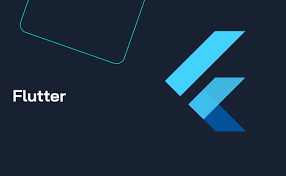1. Introduction to Flutter
Flutter app development is easy and it’s developed by Google, is a UI toolkit that allows developers to create natively compiled applications for mobile, web, and desktop from a single codebase. It uses the Dart programming language, which is known for its simplicity and efficiency. Flutter’s reactive framework ensures that the UI stays in sync with the underlying data and delivers an unparalleled performance, making it a popular choice for both startups and established companies.
2. The Benefits of Using Flutter for App Development
Before we dive into building our first app, let’s explore some of the key benefits of using Flutter for app development:
- Fast Development: Flutter’s hot reload feature allows developers to see changes instantly, making the development process much faster and efficient.
- Expressive UI: Flutter offers a wide range of customisable widgets that enable developers to create expressive and visually appealing user interfaces.
- Cross-Platform Development: With a single codebase, you can build apps for both Android and iOS platforms, saving time and effort.
- Native Performance: Flutter’s architecture ensures that your app delivers native-like performance, resulting in a smooth user experience.
3. Getting Started with Flutter: Installation and Setup
To begin building apps with Flutter, you need to install the Flutter SDK and set up your development environment. Follow these steps to get started:
3.1 Setting Up the IDE
The first step is to choose an Integrated Development Environment (IDE). Visual Studio Code (VSCode) and Android Studio are popular choices for Flutter development. Install your preferred IDE and the necessary plugins for Flutter.
3.2 Creating a New Project
Once your IDE is set up, create a new Flutter project using the Flutter CLI or IDE’s built-in tools.
3.3 Understanding the Basic Project Structure
A Flutter project consists of various files and directories. Understanding the basic structure is essential for organizing and managing your app’s code.
4. Creating Your First Flutter Project
Now that your development environment is ready, let’s create a simple “Hello World” app.
5. Building the User Interface (UI)
The UI is a crucial aspect of any app. In this section, we’ll explore Flutter’s widget system and learn how to design beautiful user interfaces.: Utilizing Widgets in Flutter
Flutter is all about widgets. Learn about stateless and stateful widgets and their role in constructing UI components.
5.1 Layouts and Components
Master various layout options and pre-built components that Flutter offers to arrange widgets effectively.
5.2 Styling Your App
Customize your app’s appearance by applying styles and themes to create a visually appealing UI.
6. Adding Functionality to Your App
A great UI needs to be complemented with functionality. In this section, we’ll add interactivity to our “Hello World” app.
6.1 Handling User Input
Learn how to handle user interactions and respond to user input within your app.
6.2 State Management
Explore different state management techniques to efficiently manage the app’s state and data flow.
7. Testing Your App
Testing is a crucial part of the app development process. Discover various testing tools and techniques for Flutter.
7.1 Debugging and Troubleshooting
Learn how to identify and fix issues in your app using Flutter’s debugging capabilities.
7.2 Running Tests
Write and execute tests to ensure your app functions as expected across different scenarios.
8. Publishing Your App
Congratulations on building your first Flutter app! In this section, we’ll discuss how to prepare your app for release and deploy it to app stores.
8.1 Preparing for Release
Ensure your app is production-ready by following essential pre-release steps.
8.2 Deploying to App Stores
Learn how to submit your app to the Google Play Store and Apple App Store for users to download and enjoy.
9. The Growing Popularity of Flutter for eCommerce Businesses
Flutter’s capabilities have made it an attractive choice flutter for eCommerce businesses. Learn how Flutter can enhance your eCommerce app development.
10. Why You Should Hire a Flutter Developer
If you’re considering building a complex app, hiring a skilled Flutter developer can make a significant difference. Find out the benefits of hiring Flutter experts.
Conclusion
In conclusion, Flutter is a powerful and versatile framework that simplifies the process of app development. With its expressive UI, native performance, and cross-platform capabilities, building apps has never been more efficient. So, roll up your sleeves, dive into Flutter, and bring your app ideas to life!

